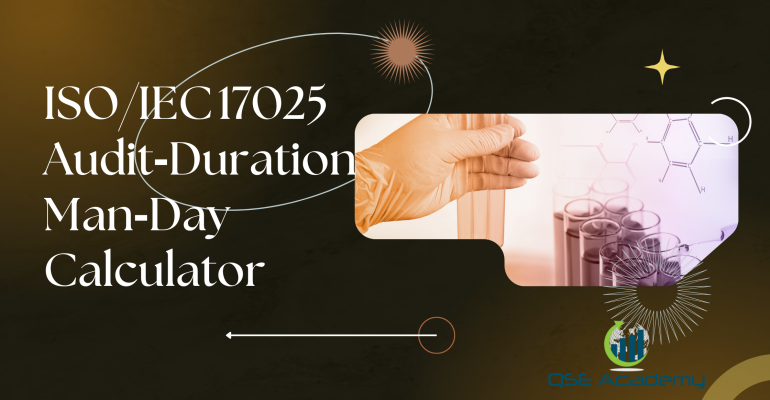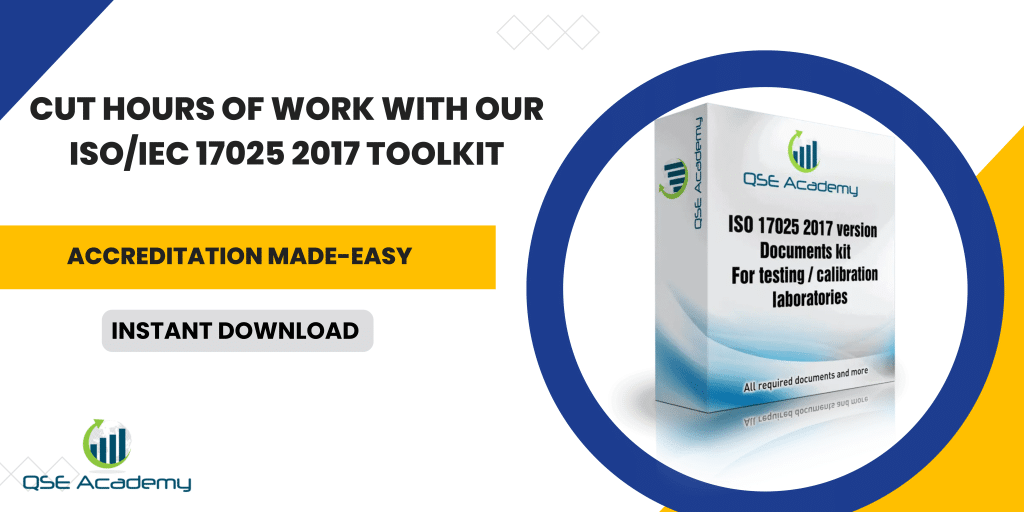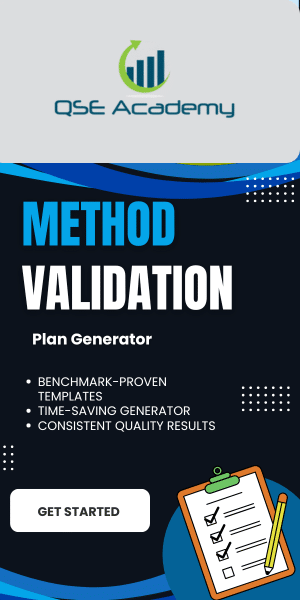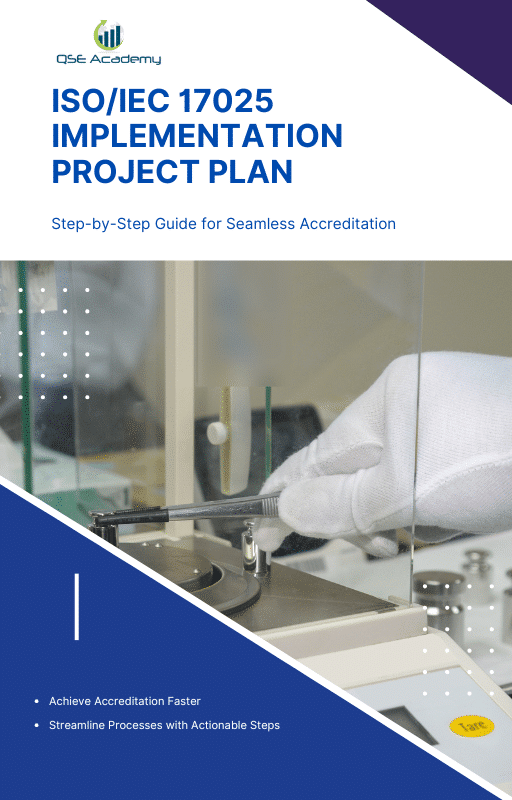ISO/IEC 17025 Audit‑Duration Man‑Day Calculator
Last Updated on October 13, 2025 by Melissa Lazaro
Why Audit Duration Matters in ISO/IEC 17025 Accreditation
If you’ve ever tried planning for ISO/IEC 17025 accreditation, you know one of the toughest questions is, “How long will the audit take?”
That’s not just curiosity—it’s strategy. Audit duration affects your lab’s schedule, staff availability, and of course, your budget. The more assessors and audit days involved, the higher the overall cost. Yet most labs don’t realize they can actually estimate this early on.
In my experience helping labs prepare for accreditation, the confusion always starts here. Some expect a quick two-day visit. Others block off two weeks. Both can be wrong—because every accreditation body calculates audit man-days differently.
The good news? Once you understand what factors influence audit duration, you can predict it with surprising accuracy—and plan accordingly.
That’s exactly what this guide does. You’ll learn:
-
What goes into determining man-days for an ISO/IEC 17025 audit
-
How different accreditation bodies calculate their audit time
-
How to build your own realistic estimate (with examples)
-
Simple ways to reduce man-days without cutting corners
By the end, you’ll have a clear picture of how long your audit will take—and how to use that knowledge to control both time and cost.
Understanding the ISO/IEC 17025 Audit Process
Before you can estimate how long your audit will take, you need to understand what actually happens during it. Too many labs assume it’s just a one-day visit from an assessor—but ISO/IEC 17025 accreditation is a structured process, not a quick inspection.
Here’s the big picture: every assessment follows several key stages. Knowing them helps you plan time, manpower, and resources smartly.
1. Application and Document Review
Once you apply for accreditation, the accreditation body starts by reviewing your submitted documents—your quality manual, procedures, scope of accreditation, and records.
This step usually happens off-site and can take half a day to two full days, depending on how complex your documentation is.
Pro tip: The clearer and more organized your documents, the less time assessors spend asking for clarifications later.
2. On-Site Assessment
This is where the real audit happens. Assessors visit your laboratory to evaluate compliance with ISO/IEC 17025 requirements in action—everything from technical methods and equipment calibration to staff competence and traceability.
For small labs, this stage can take two to four days. Larger, multi-department labs may need five to ten days.
Example:
A calibration lab focusing only on electrical parameters might complete its audit in three days. A multi-discipline testing lab handling chemical, mechanical, and microbiological methods? Expect a full week, maybe more.
3. Corrective Action Review
After the assessment, you’ll receive a report with any nonconformities. You then have a set timeframe—usually 30 to 60 days—to address them.
Assessors will review your corrective actions, sometimes remotely, sometimes with a short follow-up visit.
If your responses are complete and well-documented, this review takes less than a day. If not, it can trigger another full visit.
4. Accreditation Decision and Certificate Issuance
Once everything checks out, the accreditation body’s committee reviews your assessment report and approves accreditation. This step is administrative—it doesn’t involve more man-days, but delays can happen if documentation is incomplete or corrections aren’t clearly evidenced.
5. Surveillance and Reassessment
ISO/IEC 17025 isn’t a “once and done” system. You’ll undergo surveillance assessments—typically every 12 to 18 months—to verify ongoing compliance.
These are shorter, about 50–70% of your initial audit duration, but still require planning and internal readiness.
Here’s why this matters:
When you know each stage, you can estimate man-days more accurately. It’s not just about how many assessors show up—it’s about how long each phase takes and how much preparation you can do to shorten it.
Key Factors That Influence Audit Man-Days
Here’s something I’ve learned after guiding dozens of labs through accreditation: no two ISO/IEC 17025 audits take the same amount of time.
Even labs in the same industry, with similar staff sizes, can end up with completely different audit durations—and costs.
The difference always comes down to a handful of key factors that accreditation bodies use to calculate man-days.
Let’s break them down clearly.
1. Scope of Testing or Calibration
The broader your scope, the longer your audit.
Every additional test or calibration method means more records to review, more competence to verify, and often another assessor with specialized expertise.
Example:
A calibration lab limited to pressure and torque might need 3 days.
Add temperature and electrical calibrations—and you could be looking at 6.
Pro tip: Start with a focused scope. You can always expand later once you’re accredited and running smoothly.
2. Size and Structure of the Laboratory
Man-days are heavily influenced by how many people, departments, and sites you have.
Each additional location or section requires extra assessment time to verify consistency and control.
In my experience:
A single-site lab with 8 staff might need 3–4 assessor days.
A multi-site operation with 40 staff could need 8–10, especially if locations run independently.
3. Technical Complexity of Methods
Not all test methods are equal in audit effort.
Simple visual or physical tests take less time than complex chromatographic, microbiological, or spectrometric analyses.
The more sophisticated your equipment and methods, the more assessor expertise—and time—you’ll need.
Pro tip: Labs with complex methods benefit from having well-documented method validation and uncertainty data. Assessors move faster when evidence is clear and organized.
4. Level of Readiness and Documentation Quality
This one’s entirely in your control.
Labs that prepare thoroughly, organize documents clearly, and train staff well can reduce audit duration significantly.
When assessors spend time hunting for missing records, that time is billed.
Common pitfall:
Some labs underestimate the time wasted explaining inconsistent procedures. A one-hour clarification might sound minor—but multiply that by multiple assessors over several days, and it adds up.
5. Accreditation Body’s Calculation Formula
Each accreditation body—SANAS, ANAB, UKAS, NABL, DAkkS—uses its own model to calculate audit man-days.
Some base it on staff numbers, others on technical areas, and others on total scope complexity.
That’s why two identical labs under different bodies can receive different time estimates.
Pro tip: Always request your body’s “assessment day calculation guide.” It’s usually available upon request and helps you plan accurately.
Bottom line:
Audit man-days aren’t random—they’re the result of measurable factors.
The more you understand these drivers, the better you can predict and manage your audit time (and cost).
How Accreditation Bodies Calculate Audit Duration
Here’s where the mystery starts to make sense.
Every accreditation body—whether it’s SANAS, ANAB, UKAS, or another—has its own internal formula for determining how many man-days your ISO/IEC 17025 audit will take.
These formulas might not always be publicly available, but after years of seeing dozens of quotations and audit schedules, I can tell you the logic is almost always the same: scope + complexity + people = time.
Let’s unpack that in plain language.
1. The Basic Equation
Most accreditation bodies start with three main inputs:
-
Number of technical areas or disciplines (e.g., electrical, chemical, mechanical)
-
Number of personnel involved in testing or calibration
-
Complexity of methods and equipment
Each area adds a certain number of assessor days.
Then, they add time for:
-
Document review before the on-site visit
-
Reporting and follow-up after the visit
-
Travel or multi-site coordination if applicable
The total becomes your audit’s man-day estimate.
Example:
If your lab has 3 technical areas and 10 staff, an accreditation body may assign:
-
1 day for document review
-
3 days on-site for technical assessment
-
1 day for closing and reporting
That’s 5 total assessor days, often multiplied by the number of assessors involved (lead + technical experts).
2. SANAS Approach (South Africa)
SANAS typically estimates based on the number of technical areas and complexity.
Each area adds between 0.5 to 2 assessor days.
So a simple, single-discipline lab might get a 3-day assessment, while a multi-area test facility could exceed 10 days.
Pro tip: SANAS also includes travel separately, so plan those costs and days in your scheduling.
3. ANAB Approach (USA)
ANAB uses a scope-driven formula, combining staff count, number of test methods, and assessor qualifications.
They often allocate specific hours for:
-
Document review (off-site)
-
On-site technical evaluation
-
Report preparation and closing
Their formulas tend to be detailed and conservative—expect 4–8 total assessor days for a mid-size lab.
4. UKAS Approach (UK)
UKAS blends technical area assessment with management system review.
Their formula often includes:
-
1–2 days for document review
-
1 day for management and impartiality
-
2–6 days for technical assessments, depending on scope and location
Example:
A medium-sized environmental testing lab might receive an 8-day total estimate:
2 days review + 5 days on-site + 1 day reporting.
5. NABL and DAkkS Examples
-
NABL (India): Calculates using staff size and number of parameters under accreditation. Smaller labs can finish in 3–4 days; large, multi-scope labs can exceed 10.
-
DAkkS (Germany): Often more rigorous—audits are detailed, sometimes with multiple technical assessors. Expect longer durations (6–12 man-days typical).
6. Comparative Overview
| Accreditation Body | Formula/Approach | Typical Range (Man-Days) | Notes |
|---|---|---|---|
| SANAS | Based on technical areas & complexity | 3–10 | Travel separate |
| ANAB | Scope & staff-based | 2–8 | Includes document review |
| UKAS | Combines management + technical assessment | 4–12 | Transparent online fee structure |
| NABL | Staff count + test parameters | 3–10 | Affordable, longer processing |
| DAkkS | Technical depth & documentation review | 6–12 | High scrutiny, longer audits |
Bottom line:
Every accreditation body uses its own math—but the outcome depends on the same principles: the breadth of your scope, the depth of your testing, and how ready you are.
Once you know these, you can estimate your audit duration almost as accurately as the assessors themselves.
Building Your Own ISO/IEC 17025 Audit Man-Day Estimate
By this point, you probably realize there’s no universal “audit duration chart” that fits every lab.
But the truth is—you can estimate your own audit duration with surprising accuracy once you understand the logic behind it.
I’ve helped dozens of labs create their own quick man-day calculators in Excel, and the process is simpler than most people think.
Let’s walk through how to build your own ISO/IEC 17025 audit man-day estimate step-by-step.
Step 1: List Your Technical Areas and Test Methods
Start with your scope of accreditation—that’s the foundation.
List every technical area (e.g., mechanical, chemical, electrical, temperature, pressure) and count the number of test or calibration methods under each.
Pro tip: Combine related methods where possible; it simplifies your calculation and can reduce unnecessary assessor time.
Step 2: Identify the Number and Type of Assessors
Most audits require at least:
-
One Lead Assessor for management and quality system review
-
One or more Technical Assessors based on the scope and expertise needed
If you have multiple disciplines, expect one technical expert per area.
Example:
-
Mechanical + Electrical calibration = 2 technical assessors
-
Chemical + Microbiology = 2 technical assessors + 1 lead assessor
Step 3: Assign Time Estimates for Each Stage
Here’s a practical rule of thumb based on what I’ve seen across dozens of audits:
| Audit Stage | Estimated Duration per Assessor |
|---|---|
| Document Review | 0.5 – 1 day |
| On-Site Technical Assessment | 1 – 2 days per technical area |
| Closing Meeting & Reporting | 0.5 – 1 day |
So, for a single-site lab with 3 technical areas and 2 assessors:
(1 day review + 3 days on-site + 1 day reporting) × 2 assessors = 10 assessor-days total
Step 4: Adjust for Locations and Complexity
If you operate more than one site, add 0.5 to 1 extra day per additional site.
If your methods are complex (e.g., chromatographic, spectrometric, microbiological), add 1–2 days depending on the number of parameters involved.
Example:
A two-site chemical lab with advanced instrumentation might need:
(1 + 4 + 1) × 2 assessors + 1 travel day = 12 total man-days
Step 5: Add a Buffer for Corrective Actions or Re-Assessment
Even well-prepared labs need to account for follow-up reviews—especially if assessors need to verify corrective actions.
Add 0.5 to 1 day for post-assessment reviews.
Pro tip:
You can minimize this by submitting clear, well-documented corrective actions the first time around.
Step 6: Turn It Into a Quick Reference Table
| Lab Type | Scope Size | Assessors | Audit Duration (Days) | Total Man-Days |
|---|---|---|---|---|
| Small Calibration Lab | 1–2 areas | 1 | 2–3 | 2–3 |
| Medium Testing Lab | 3–4 areas | 2 | 3–5 | 6–10 |
| Large Multi-Site Lab | 5+ areas | 3 | 5–7 | 15–21 |
Here’s what I’ve noticed:
Labs that plan using this kind of estimate almost always stay on schedule—and within budget.
It’s not about guessing; it’s about anticipating what the assessors will need time to verify.
That’s how you move from reactive to strategic accreditation planning.
Reducing Audit Duration Without Compromising Quality
Here’s the part most labs care about—how to shorten the audit without cutting corners.
Because let’s face it, the longer assessors stay, the more it costs.
But there’s a smart way to reduce audit duration that doesn’t sacrifice compliance or quality. It’s all about preparation, clarity, and efficiency.
I’ve seen labs shave one to two days off their audits just by tightening documentation and training their team well.
Here’s exactly how they do it.
1. Conduct a Gap Analysis Before Applying
A simple internal gap analysis can save days of back-and-forth during the real audit.
This step identifies missing procedures, unclear responsibilities, or outdated calibration records long before assessors step in.
Pro tip:
Fixing a nonconformity during the audit wastes both your time and theirs. Fixing it in advance costs almost nothing.
Example:
One mid-sized calibration lab ran a pre-assessment using a checklist based on ISO/IEC 17025 clauses. They identified seven gaps, fixed them in two weeks—and their final audit finished half a day early.
2. Prepare Complete, Organized Documentation
Assessors work faster when your documentation tells a clear story.
That means:
-
Logical structure (policy → procedure → record)
-
Current revision levels
-
Consistent formatting and traceability
Disorganized files slow down assessments dramatically. Every “Where’s that record?” moment adds up.
Pro tip:
Keep all records—equipment calibrations, uncertainty budgets, staff training proofs—in one indexed folder or digital system.
3. Limit Scope in Your First Application
You don’t need to accredit every test or calibration from day one.
Start with your most critical or frequently used methods, then expand your scope later.
This approach reduces audit complexity and duration during your first assessment.
In my experience:
Labs that begin with a focused scope save up to 30% in both audit time and assessor fees.
4. Train Your Staff for Audit Readiness
Assessors don’t just check documents—they talk to your team.
When staff confidently explain test methods, equipment traceability, and uncertainty calculations, assessors move through evaluations faster.
When staff hesitate, explain inconsistently, or contradict procedures—it slows everything down.
Pro tip:
Run an internal “mock interview” before the audit. Let team members practice answering common questions about traceability, methods, and quality control.
5. Calibrate Equipment and Update Records Early
Nothing stalls an audit like expired calibration certificates.
Make sure all critical instruments are calibrated, traceable, and have valid certificates ready before the assessment.
Example:
One testing lab scheduled all equipment recalibrations a month before their planned audit date. Their assessor literally said, “You made my job easy.” That’s a compliment that saves money.
6. Communicate Clearly with Your Accreditation Body
Sometimes delays happen simply because of unclear communication—missing documents, incorrect scope descriptions, or overlooked logistics.
Confirm all audit dates, assessor assignments, and expectations early.
Pro tip:
Ask for the audit plan at least two weeks before the visit. Knowing what assessors will focus on helps you prepare those exact records.
Bottom line:
You don’t reduce audit days by pushing back—you do it by preparing better.
Every hour you spend getting ready before the audit saves multiple hours (and dollars) during it.
Preparation is your most powerful cost-control tool.
Example – Quick Man-Day Estimation Table by Lab Type
Let’s put all that theory into something practical.
When I work with clients, one of the first things they ask is, “Okay, but what’s normal for a lab like mine?”
So here’s a quick reference table showing typical audit durations and total man-days based on lab type, size, and scope complexity.
These are not official numbers—each accreditation body has its own formula—but they’re based on real-world averages I’ve seen across different audits.
Estimated ISO/IEC 17025 Audit Duration by Lab Type
| Lab Type | Typical Size (Staff) | Scope Complexity | Audit Duration (Days) | No. of Assessors | Total Man-Days |
|---|---|---|---|---|---|
| Small Calibration Lab | 3–6 | 1–2 parameters (e.g., pressure, torque) | 2–3 | 1 | 2–3 |
| Medium Testing Lab | 10–20 | 3–5 parameters (e.g., mechanical, chemical, thermal) | 3–5 | 2 | 6–10 |
| Large Multi-Site Lab | 25–50 | 5+ parameters, multiple test areas | 5–7 | 3 | 15–21 |
| High-Complexity Analytical Lab | 20–30 | Advanced chromatographic or spectroscopic methods | 6–8 | 3 | 18–24 |
| Calibration + Testing Hybrid Lab | 15–25 | Dual-scope accreditation | 4–6 | 2–3 | 10–18 |
How to Read This Table
-
Audit Duration (Days): How long assessors are physically (or virtually) evaluating your lab.
-
No. of Assessors: How many experts are assigned—usually one lead and one or more technical assessors.
-
Total Man-Days: The combined audit time (e.g., 2 assessors × 5 days = 10 man-days).
Real Example from Practice
A mid-size mechanical calibration lab I worked with in Malaysia had:
-
12 staff
-
3 technical areas (torque, force, dimensional)
-
1 main site
Their audit lasted 4 days on-site with 2 assessors, plus half a day of document review.
Total = 9 man-days.
Because their documentation was tight and scope was clearly defined, assessors finished half a day early—saving around USD 400 in billed time.
Pro Tip
If your calculated estimate differs drastically from these averages, review your scope definition and assessor assignments.
Sometimes, labs accidentally include overlapping methods or understate complexity, leading to major miscalculations in quoted audit time.
Here’s the takeaway:
Man-days aren’t random—they’re predictable when you know your lab’s size, scope, and readiness.
This kind of estimation is exactly what helps labs plan better budgets, avoid schedule chaos, and keep audits running efficiently from day one.
FAQs – ISO/IEC 17025 Audit Duration
By now, you’ve got a pretty solid understanding of how audit man-days are calculated and how to estimate your own.
Still, there are a few common questions that come up every time I work with a lab on their ISO/IEC 17025 journey.
Let’s tackle those quickly and clearly.
1. How many man-days are needed for an initial ISO/IEC 17025 accreditation?
It depends on your lab’s size, scope, and complexity—but generally:
-
Small single-discipline labs: 2–4 man-days
-
Medium-sized labs: 6–10 man-days
-
Large or multi-site labs: 12–20 man-days
Accreditation bodies usually provide this estimate in your quotation once you submit your application and scope of accreditation.
Pro tip:
If your initial quote seems unusually high, ask for a breakdown by activity (document review, on-site assessment, reporting). Transparency helps you spot overestimates.
2. Does surveillance take as long as the initial audit?
No, surveillance audits are typically shorter—about 50–70% of your initial audit duration.
The focus is on verifying that your management system is still effective and that you’ve addressed any previous findings.
Unless you’ve added new methods or changed your scope, it should take less time.
Example:
If your initial audit was 10 man-days, your first surveillance might take around 5–7.
3. Can we shorten our audit time by limiting the scope?
Yes—and it’s one of the most practical strategies.
Focusing on your core services for the first accreditation reduces assessor hours and simplifies your preparation.
Once you’re accredited, you can apply for a scope extension later with much less effort and cost.
4. Do virtual or hybrid audits reduce man-days?
Sometimes.
Post-COVID, many accreditation bodies now use remote document reviews or hybrid assessments.
While this can save travel time, the total assessor hours often remain the same—it’s just split between on-site and online sessions.
Pro tip:
Hybrid assessments work best for follow-ups or surveillance, not full initial accreditations where physical verification is essential.
5. What’s the difference between assessor days and man-days?
A man-day represents one assessor working for one day.
So, if two assessors spend three days on-site, that equals six man-days total.
It’s a small detail, but it’s the key to understanding how accreditation bodies calculate total effort (and billing).
6. Can I request fewer assessors to reduce man-days?
You can ask—but accreditation bodies will only agree if your scope allows it.
Each technical area usually requires an assessor with matching expertise. Reducing assessors below what’s needed might delay the decision or lead to incomplete evaluations.
Bottom line:
Audit duration isn’t a mystery—it’s math.
The better you understand your lab’s structure, methods, and scope, the easier it is to plan time, budget accurately, and avoid last-minute surprises.
Plan Smart, Audit Efficiently
If there’s one thing I’ve learned after years of helping labs prepare for ISO/IEC 17025 accreditation, it’s this:
audit duration isn’t random—it’s predictable.
When you understand what drives man-days—your scope, complexity, readiness, and accreditation body’s method—you take control of both your schedule and your costs.
Labs that plan early rarely face the chaos of last-minute overtime, extended audits, or surprise fees. They know what’s coming and manage it strategically.
Here’s What to Remember
-
Know your scope and complexity. Every added parameter or technical area extends audit time.
-
Request your man-day estimate early. Accreditation bodies can provide a breakdown if you ask for it.
-
Use internal tools. Build your own calculator or use a template to predict man-days and resource needs.
-
Train and prepare your team. Confidence and clarity reduce on-site delays.
-
Stay proactive. A clean, well-run system makes audits faster—and more cost-effective.
Real-World Perspective
One of my clients—a mid-sized calibration lab—used a simple Excel-based man-day calculator before applying.
Their estimate came within half a day of the actual audit duration. Because they planned staffing and documentation around that timeline, they avoided rush fees and completed accreditation ahead of schedule.
That’s what smart planning looks like—it’s not about guessing, it’s about knowing.
Final Thought
If you’re preparing for accreditation, don’t wait for the quotation to understand your audit time.
Take initiative. Estimate it yourself. Use it to plan staffing, budgeting, and training.
To make that easier, QSE Academy offers a free ISO/IEC 17025 Audit-Duration Calculator Tool and a Complete Documentation Package designed to help labs prepare efficiently, reduce assessor days, and meet accreditation requirements faster.
Ready to find out how long your audit will really take?
Start with a clear estimate—and plan your accreditation with confidence.
I hold a Master’s degree in Quality Management, and I’ve built my career specializing in the ISO/IEC 17000 series standards, including ISO/IEC 17025, ISO 15189, ISO/IEC 17020, and ISO/IEC 17065. My background includes hands-on experience in accreditation preparation, documentation development, and internal auditing for laboratories and certification bodies. I’ve worked closely with teams in testing, calibration, inspection, and medical laboratories, helping them achieve and maintain compliance with international accreditation requirements. I’ve also received professional training in internal audits for ISO/IEC 17025 and ISO 15189, with practical involvement in managing nonconformities, improving quality systems, and aligning operations with standard requirements. At QSE Academy, I contribute technical content that turns complex accreditation standards into practical, step-by-step guidance for labs and assessors around the world. I’m passionate about supporting quality-driven organizations and making the path to accreditation clear, structured, and achievable.












